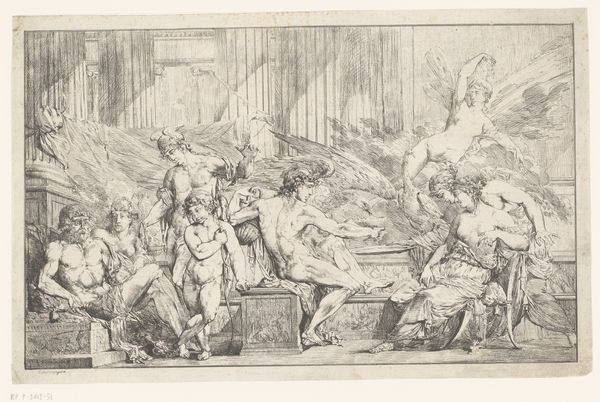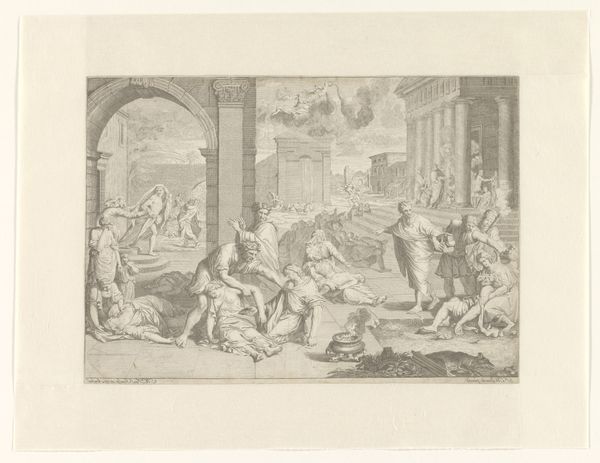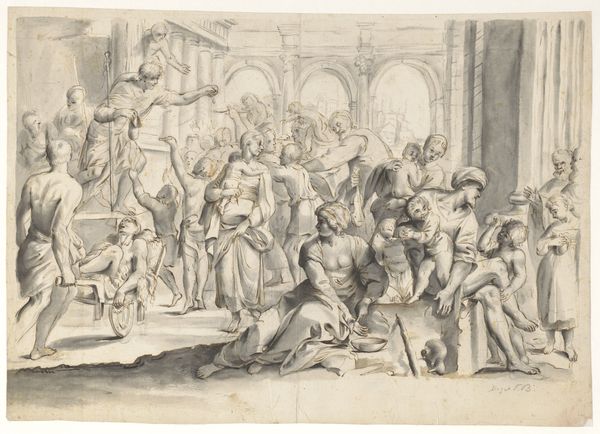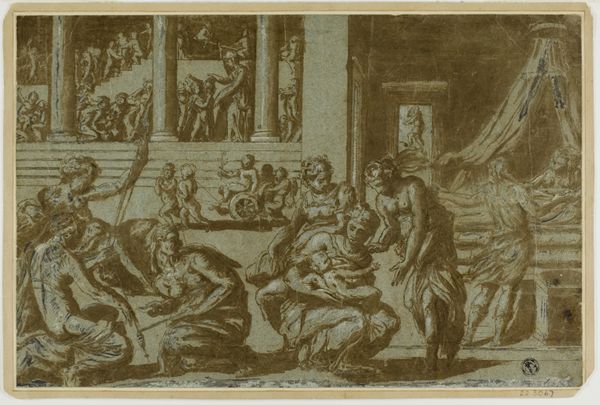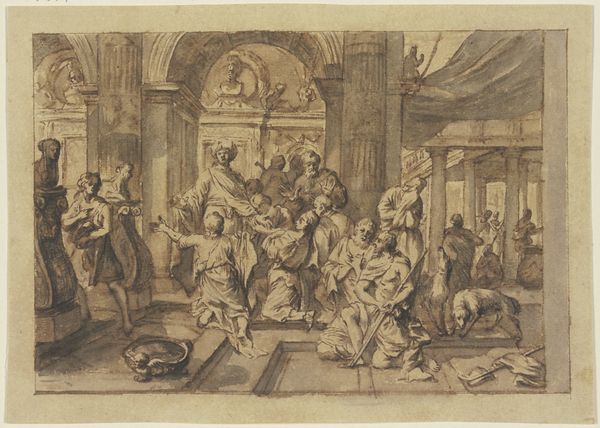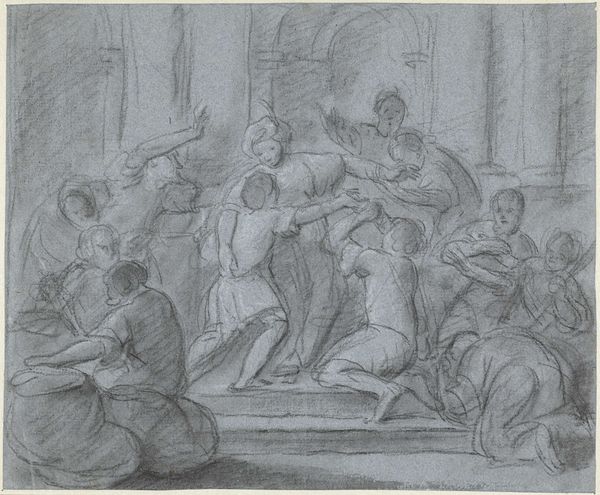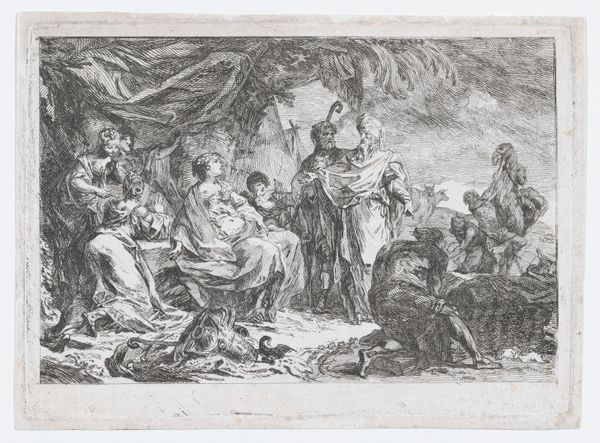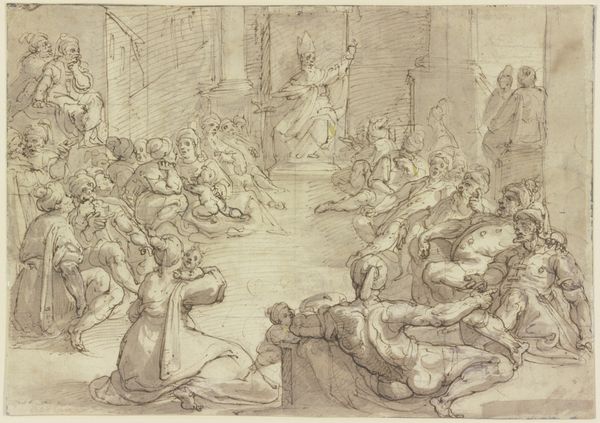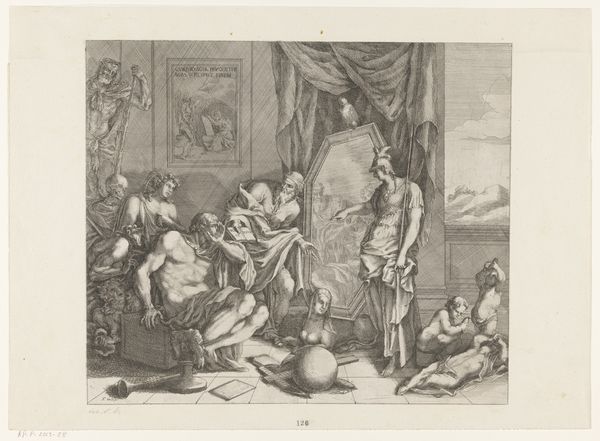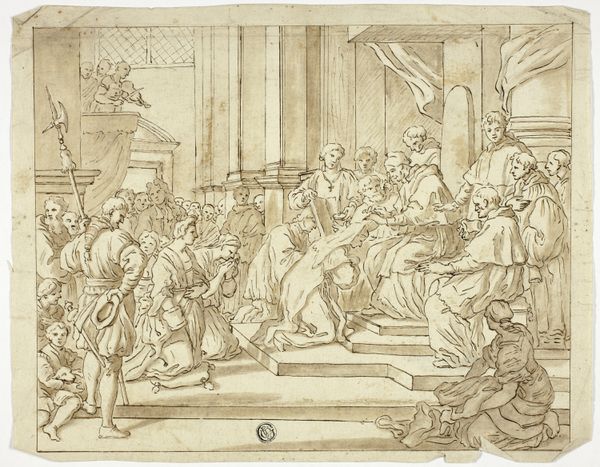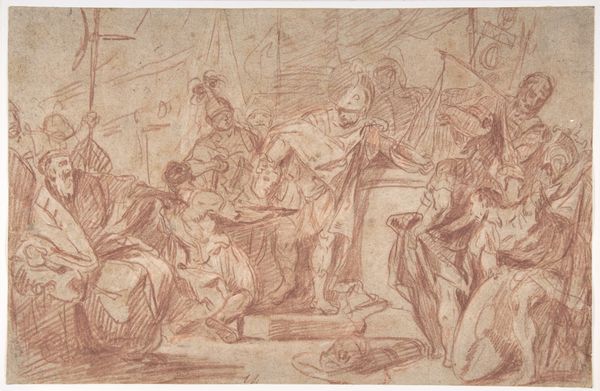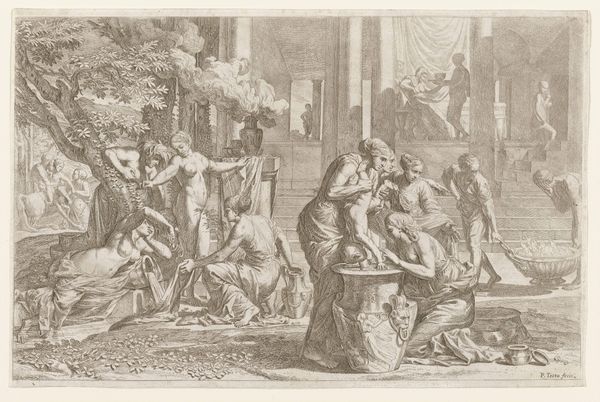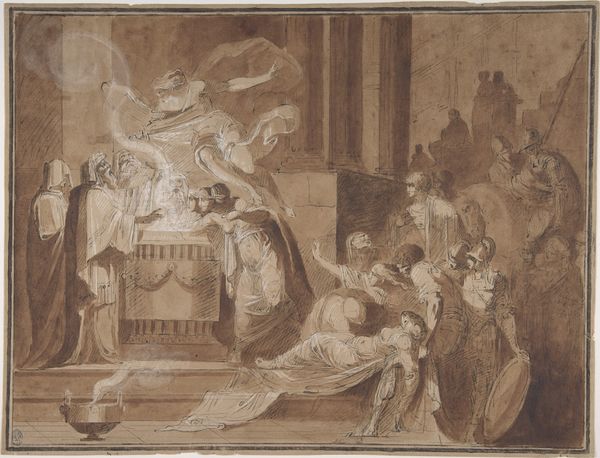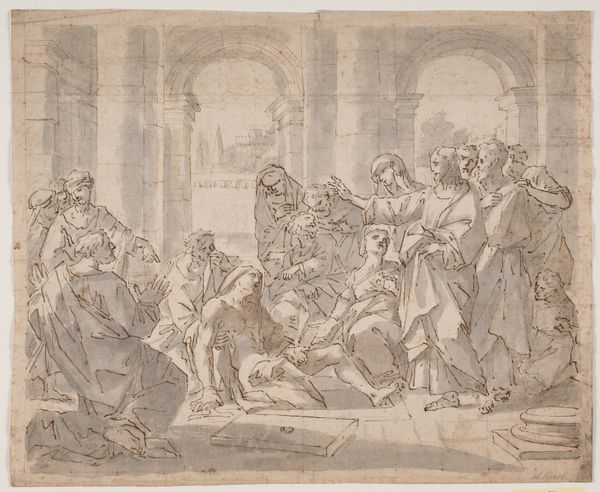
The Harpies Driven from the Table of King Phineus by Zetes and Calais 1665 - 1730
0:00
0:00
drawing, print, pencil, engraving
#
drawing
#
narrative-art
#
baroque
# print
#
figuration
#
pencil drawing
#
pencil
#
history-painting
#
engraving
Dimensions: 10 1/4 x 19 3/8 in. (26 x 49.2 cm)
Copyright: Public Domain
Curator: This drawing, created between 1665 and 1730 by François Verdier, depicts the Harpies Driven from the Table of King Phineus by Zetes and Calais. The artwork utilizes pencil and engraving techniques. Editor: What immediately strikes me is the frantic energy conveyed through a rather muted palette. It looks chaotic yet controlled, almost like a dance. Curator: Absolutely, the baroque dynamism is quite pronounced here. Note how Verdier employs dramatic diagonals and swirling figures to create a sense of movement and heightened emotion, a typical trait within the Baroque aesthetic. The engraving adds another layer through textural details, playing on the contrast between light and dark which intensifies the drama. Editor: I’m particularly drawn to the material implications of such a scene: the lavish banquet being destroyed, the spillage and waste indicating disruption in the economy of consumption. Those harpies are clearly making a statement about value itself! Curator: A compelling viewpoint! Symbolically, it echoes a deeper conflict. The tale stems from Greek mythology. Phineus, punished with blindness and tormented by harpies, is rescued by Zetes and Calais, winged heroes. The scene captures the moment good triumphs over evil, order over chaos. It uses figuration as the core. Editor: Yes, but consider also the social dimensions! The image captures a literal and symbolic struggle for resources; it hints at the inherent vulnerability of those dependent on supply chains – even kings – a precarity very present for those living in 17th century France as well. How was something like this commissioned, produced and later, circulated as an engraving, among a viewing audience, presumably? Curator: Good points. This piece allows for diverse interpretation; from form and the construction of dramatic narrative tension, to an early form of political and social awareness regarding class and materialism. Editor: Precisely, the dynamism goes beyond aesthetics, resonating within real-world struggles that makes this Baroque scene unexpectedly current.
Comments
No comments
Be the first to comment and join the conversation on the ultimate creative platform.
